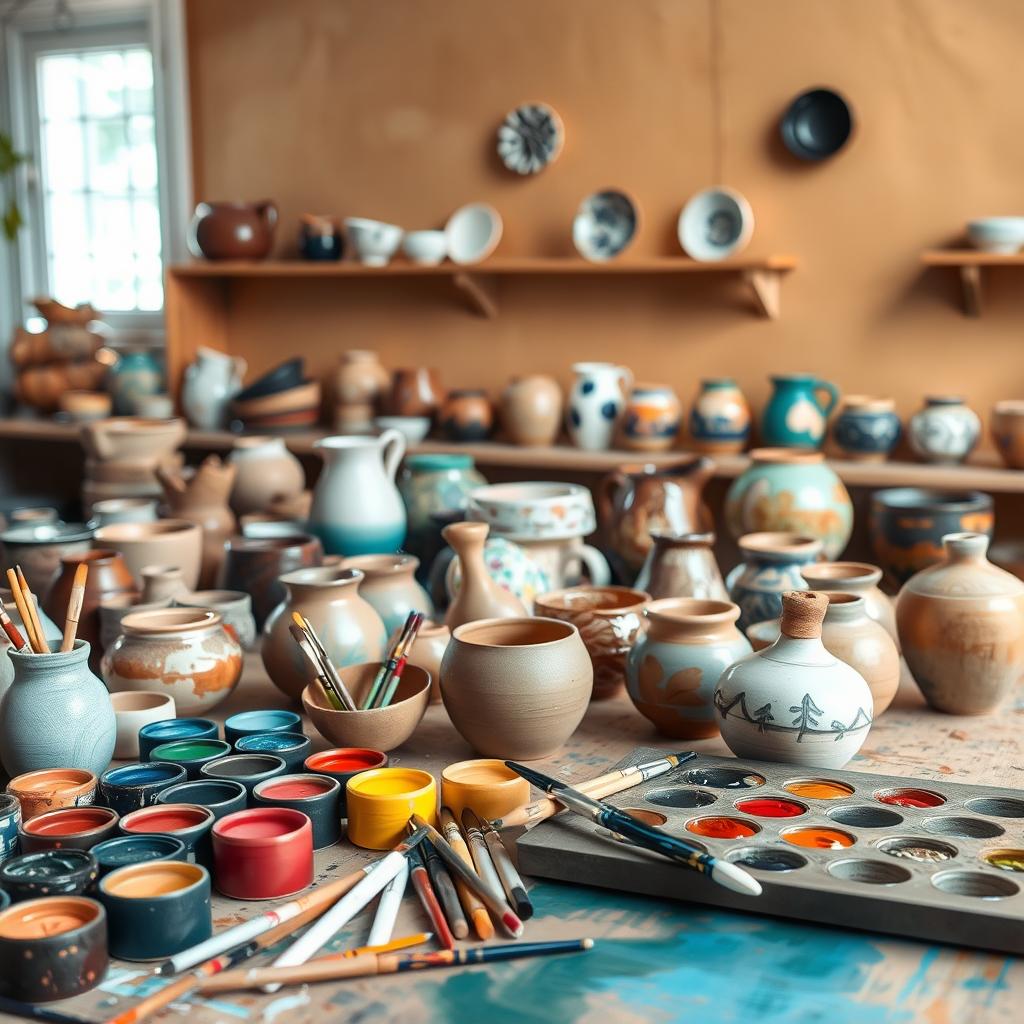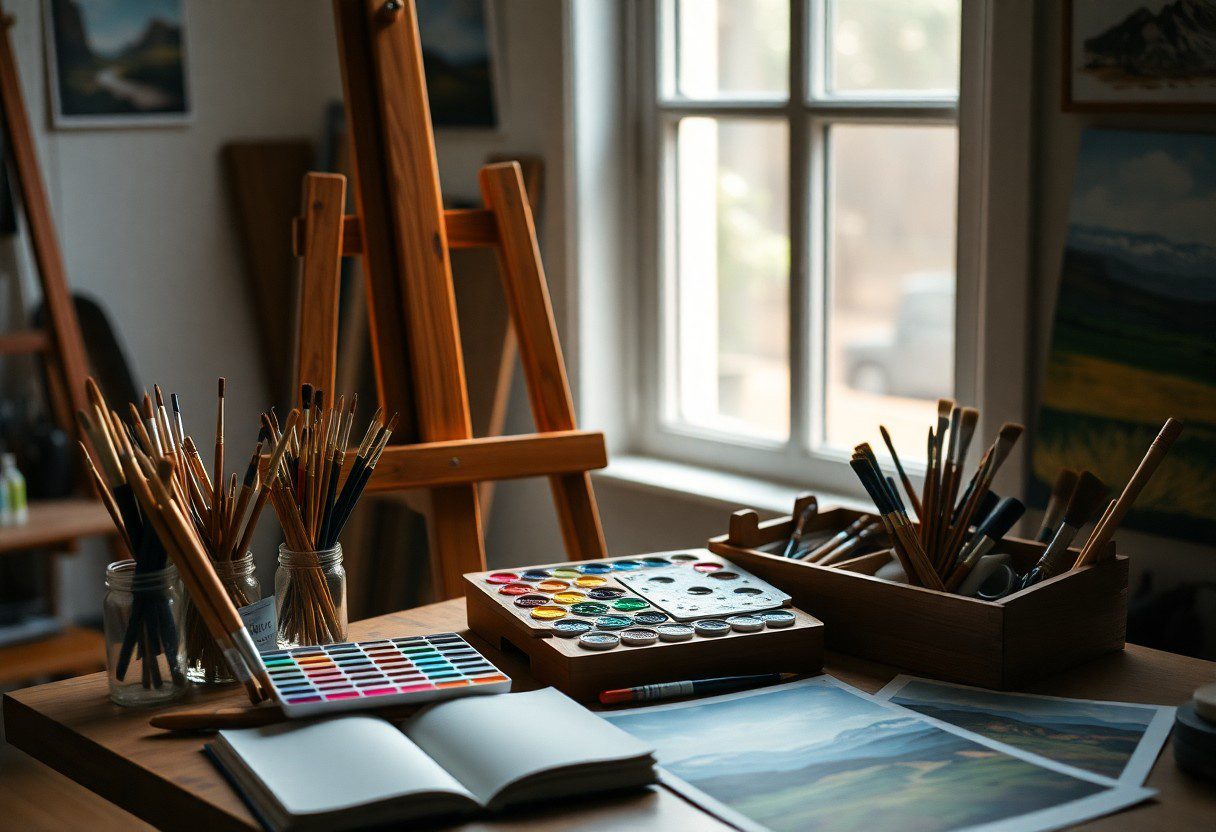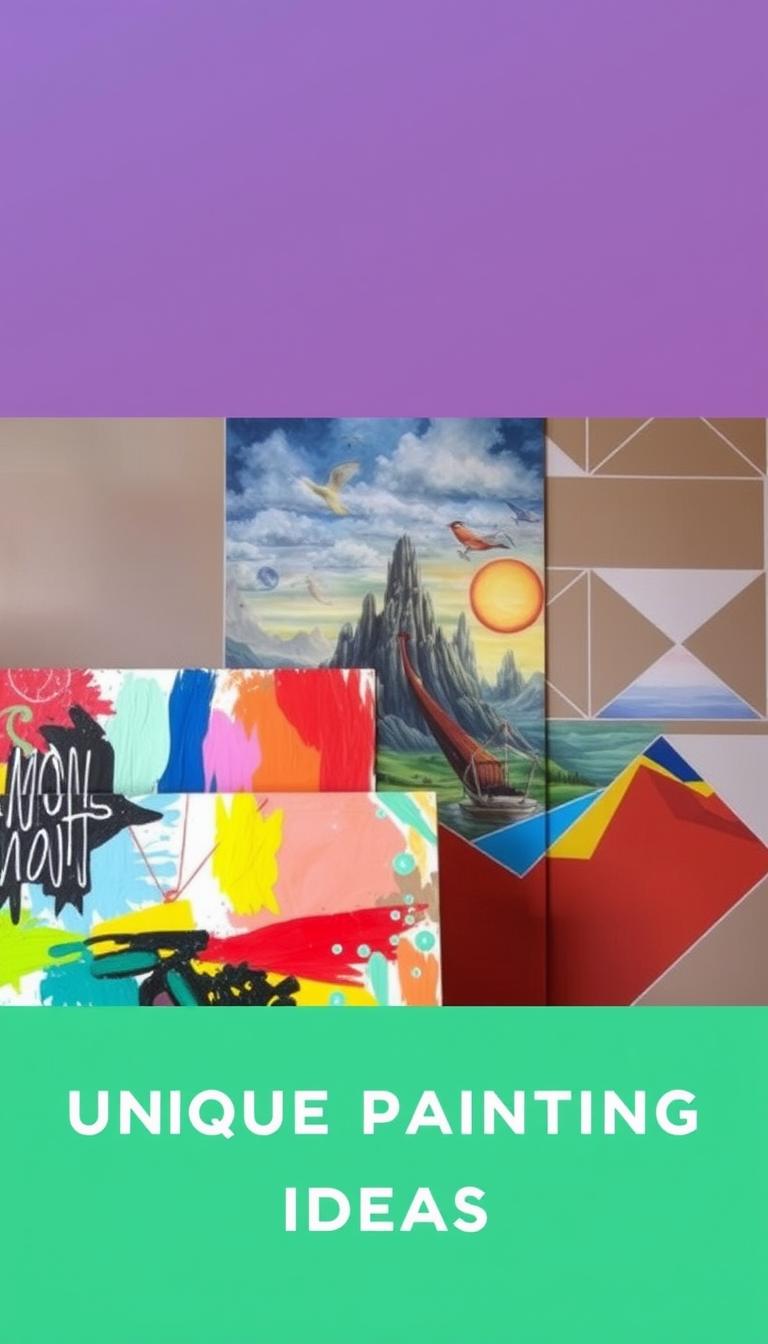Landscape painting requires the right tools to truly capture the beauty of nature. As you begin on your artistic journey, equipping yourself with crucial supplies will enhance your experience and improve your skills. This blog post outlines the must-have tools that every landscape painter should keep at home, ensuring you have everything you need to create stunning works of art. From brushes to palettes, having the right equipment will empower you to translate the vivid scenes around you onto your canvas with precision and depth.
Essential Painting Supplies
Your painting experience greatly depends on the imperative supplies you have at home. Having the right materials not only enhances your creativity but also ensures better results in your landscape artwork. Make sure to equip yourself with high-quality paints, mediums, canvases, and brushes to elevate your skills and produce stunning compositions.
Brushes
Against a backdrop of varied techniques and styles, the right brushes are vital to your landscape painting journey. Different shapes and sizes cater to specific tasks, from broad strokes for skies to fine details in foliage, and investing in a selection of good-quality brushes will significantly elevate your work.
Palette
By choosing the right palette for your landscape painting, you can streamline your color mixing process and create cohesive compositions. A versatile palette makes it easier to blend colors and keep your workspace organized, allowing you to focus on bringing the beauty of nature to life.
Due to an artist’s choice of palette material—be it wood, glass, or disposable options—each type offers unique advantages. A wooden palette provides a warm feel, while a glass palette is easy to clean and allows you to see colors accurately. Your selection will impact your coloring techniques and overall experience, so consider which palette will suit your style and workflow best.
Paint Types and Choices
You have a variety of paint types at your disposal, each offering unique qualities and benefits for landscape painting. Consider the following options:
| Type | Characteristics |
| Oil Paints | Rich color, slow drying, versatile |
| Acrylics | Fast drying, water-soluble, flexible |
| Watercolors | Translucent, layered effects, light |
| Gouache | Opaque, vibrant, matte finish |
| Pastels | Soft texture, blendable, rich hues |
This selection will enhance your palette, giving you the ability to express your artistic vision with precision and style.
Oil Paints
Above all, oil paints are celebrated for their depth and richness in color. Their slow drying time allows for blending and layering, making them ideal for capturing the subtle nuances of light and texture in landscapes. Additionally, oil paints can be used on various surfaces, giving you greater flexibility in your artistic endeavors.
Acrylics
Before you choose, acrylics stand out for their versatility and quick drying time. Unlike oils, they can be thinned with water, making cleanup hassle-free. Acrylics allow you to create vibrant colors and experimental techniques, ideal for capturing the energy of a landscape swiftly.
Consequently, acrylics are perfect for both beginners and experienced artists looking to experiment. Their adaptability means you can achieve various effects ranging from transparent washes to thick impastos. With quick-drying properties, you can layer colors without waiting, enabling a more spontaneous painting process. Consider incorporating acrylics into your toolkit for their flexibility and ease of use.
Canvas and Paper Options
Clearly, choosing the right surface for your artwork is crucial in landscape painting. Both canvas and paper offer unique textures and absorbency that can affect your painting style and the final outcome. Exploring various options will enable you to better express your artistic vision, whether you prefer the smooth finish of paper or the textured surface of canvas.
Stretched Canvas
Beside offering ample surface area for larger works, stretched canvases provide a sturdy foundation for your paints. They come pre-stretched and primed, allowing you to start painting immediately without additional preparation. Typically made from cotton or linen, stretched canvases can help you achieve a variety of techniques, making them a staple in any landscape painter’s toolkit.
Watercolor Paper
Watercolor paper is specifically designed to handle the unique properties of water-based paints. Its thickness and texture can absorb moisture without warping, which is vital for achieving the desired effect in landscape paintings. You can choose from various weights and surfaces, such as rough, cold-pressed, or hot-pressed, depending on the techniques you prefer. Each type offers a different vibe, so experimenting with them can lead to exciting discoveries in your landscape painting journey.
The texture of watercolor paper influences the interaction of paint and water. Rough paper allows for more granulated effects, suitable for expressive brush strokes, while smooth paper is excellent for detailed work. Exploring different weights, typically ranging from 200 to 800 gsm, caters to your preferred painting techniques and styles. For best results, ensure you use 100% cotton rag paper, as it offers superior absorbency and durability, enhancing the vibrancy of your landscapes. Investing in quality watercolor paper is key to achieving stunning results in your artistic endeavors.
Additional Tools and Accessories
Now that you’ve gathered your primary painting supplies, enhancing your landscape painting experience comes down to the additional tools and accessories you choose to integrate. These not only improve your efficiency but also elevate the quality of your work. Investing in the right items can make all the difference in your creative process.
Easels
One of the most important accessories you’ll need is a sturdy easel. It provides the perfect support for your canvas, allowing you to paint comfortably at various angles. Choosing the right easel based on the size of your artwork and your working style can enhance your overall efficiency while you paint.
Palette Knives
Beside brushes, incorporating palette knives into your toolkit can expand your creative options. They are perfect for mixing paints, applying thick strokes, and achieving unique textures in your landscape paintings.
Another key benefit of palette knives is their versatility. You can use them not only for mixing colors but also for layering paint, scraping back to reveal underlying colors, or even adding intricate details. Their flat edge allows for clean, sharp lines, making them an vital tool to express your artistic vision effectively.
Outdoor Equipment
Many landscape painters find outdoor equipment vital for capturing the beauty of nature. Portable easels, suitable palettes, and high-quality brushes designed for outdoor use should be part of your toolkit. Investing in good outdoor supplies not only enhances your painting experience but also ensures that you can express your creative vision effectively, no matter where you are.
Portable Kits
Equipment designed for portability is key when you’re painting outdoors. A compact, lightweight easel and a small paintbox can make transporting your materials easier. Opt for items that can be easily packed in a backpack, enabling you to set up quickly and seize the perfect light at a moment’s notice.
Weather Protection
Between your artistic ambitions and the unpredictable nature of the outdoors, protecting yourself and your materials from the elements is vital. Having weather-resistant gear ensures that unexpected rain or wind won’t ruin your work. This includes protective covers for your canvas, waterproof bags for your paints, and clothing that shields you from the elements.
Another key consideration is a sturdy umbrella or a portable canopy that can safeguard your painting setup from rain and direct sunlight. These items not only protect your artwork but also create a comfortable space for you to work. With weather protection in place, you can focus on capturing the essence of your scene without constant worry about ongoing changes in the environment.
Storage and Organization Solutions
After investing in quality materials for your landscape painting, ensuring they are stored and organized effectively is imperative for maintaining their longevity and your creative flow. Having a designated space at home where you can easily access and store your tools will help streamline your painting process. Consider implementing effective storage solutions that keep your tools organized, from brushes and paints to canvases and palettes, allowing you to focus more on your artistry rather than searching for supplies.
Toolboxes
After considering the range of tools you use, selecting the right toolbox can make all the difference in maintaining an organized space. A sturdy toolbox provides designated sections for various items, ensuring everything from brushes to palettes is easily accessible and protected. Look for ones with dividers that allow you to separate different sizes or types of tools and ensure they are portable enough for when you want to paint outside.
Art Carts
For a more mobile and versatile solution, an art cart can be a game-changer in your studio setup. These carts come equipped with multiple shelves and compartments, making it easy to store and organize paints, brushes, and other supplies. You can easily roll the cart to your desired painting location, whether inside or outdoors, allowing you to work in a convenient space without feeling cluttered.
Another benefit of art carts is their adaptability; you can customize the layout based on your specific needs, whether you are working on intricate projects or quick studies. Many carts also come with wheels for easy mobility and can fit snugly in tighter spaces when not in use. This flexibility allows you to maintain an organized working environment, enhancing your creative process every step of the way.
To wrap up
From above, it’s clear that equipping your painting space with the right tools can elevate your landscape artistry. You should prioritize quality brushes, a sturdy easel, and a versatile palette to unlock your full creative potential. Don’t overlook the importance of high-quality paints and a reliable sketchbook for your preliminary studies. By curating a well-stocked toolkit, you’ll be prepared to capture the natural beauty around you effortlessly. So invest thoughtfully in these imperatives, and watch your skills flourish in your next painting endeavor.
FAQ
Q: What are the vital tools for a landscape painter?
A: A landscape painter should have a variety of tools to effectively capture outdoor scenes. Essential tools include quality brushes in multiple sizes, a palette for mixing colors, a selection of oil or acrylic paints, a sturdy easel that can withstand outdoor conditions, and a sketchbook for quick studies and notes. Additionally, having a palette knife is useful for mixing paint and creating texture.
Q: Do I need specific types of brushes for landscape painting?
A: Yes, the type of brushes you use can significantly impact your painting technique and the final outcome. A variety of brushes are recommended, including flat brushes for broad strokes and skies, round brushes for detail work like tree branches or foliage, and fan brushes for texture in grass or leaves. Each brush serves a different purpose, allowing for more versatility and expression in your landscape artwork.
Q: Is a color palette really necessary for landscape painting?
A: Absolutely! A color palette is vital for mixing colors and achieving the right shades you need for your landscape. It allows you to create a harmonious palette by mixing paints together, ensuring that you can replicate the colors you see in nature. It is advisable to use a non-porous surface, such as a glass or a plastic palette, as they are easier to clean and maintain for repeated use.
Q: What additional equipment may be helpful when painting landscapes outdoors?
A: When painting outdoors, having additional equipment can enhance your experience. Items like a portable folding chair can provide comfort during long painting sessions, while a sketching umbrella or portable shade can protect you from harsh sunlight. A portable water container is also useful for cleaning brushes, as well as paper towels or rags for quick touch-ups. A camera can help capture the scene for future reference as well.





